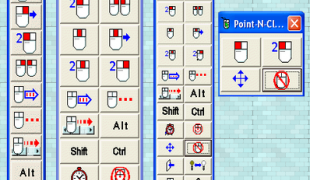- 2322
- 171
- 2
- 2
- 0
- Help Ukraine
Über die Lösung
Die einfache kostengünstige Möglichkeit, um die Tür für eine Person, die in einem Rollstuhl ist zu schließen. Ich möchte die Schnur um das mittlere Scharnier der Tür und das andere Ende um den Türgriff. Lassen Sie genug Tuch in der Stärke, so ist es leicht zu verstehen. Nachdem Sie durch die Tür gehen Sie zurück zu erreichen und ergreifen Sie die Zeichenfolge, und ziehen Sie die Tür geschlossen.
https://www.youtube.com/watch?v=f6GguYAmWmo
Diese Lösung enthält keinen Hinweis weder auf die Verwendung von Arzneimitteln, Chemikalien oder biologische Stoffe (einschließlich Lebensmitteln) noch auf invasive Geräte, anstößige, kommerzielle oder inhärent gefährliche Inhalte. Diese Lösung wurde nicht medizinisch validiert. Vorsicht! Wenn Sie irgendwelche Zweifel haben, wenden Sie sich bitte an einen Arzt.
-
-
117
-
0
-
1828

Wie warm in Rollstühlen zu halten
MOVING IN A WHEELCHAIR: Moving using a wheelchair.
Cerebral Palsy
Muscular Dystrophy
Neuromuscular Disorders
Cervical spinal cord injury/Tetraplegia
Walking Aid (wheelchair/walker/crutches)
Strategy/Tip
Cognitive impairment
Difficulty coordinating movements
Gait abnormalities (e.g., walking difficulties, unsteady gait)
Muscle cramps or spasms
Muscle weakness
Numbness or tingling in the extremities
paralysis of the legs and lower body
Stiffness or rigidity (difficulty moving)
Promoting self-management
Preventing (Vaccination, Protection, Falls, Research/Mapping)
General and Family Medicine
Medical Genetics
Neurology
Orthopedics
Rheumatology
United Kingdom
-
-
-
395
-
0
-
9667

On-Screen-virtuelle Maus
-
-
-
346
-
0
-
5896

Website, um Menschen mit Behinderungen gehen
Social interaction
Urban exploration
Shopping
Attend Concerts/Performances
MOVING IN A WHEELCHAIR: Moving using a wheelchair.
Neuromuscular Disorders
Bone Disorders (Decalcification, Bone Deformity, Bone Fracture, Bone Infection)
Cervical spinal cord injury/Tetraplegia
Website
Online service
Strategy/Tip
Difficulty coordinating movements
Gait abnormalities (e.g., walking difficulties, unsteady gait)
paralysis of the legs and lower body
Stiffness or rigidity (difficulty moving)
Restoring mobility
Promoting self-management
Building Supportive Community Relationships
Promoting inclusivity and social integration
Preventing (Vaccination, Protection, Falls, Research/Mapping)
Raise awareness
Caregiving Support
Neurology
Orthopedics
Rheumatology
United Kingdom
-
 de
de